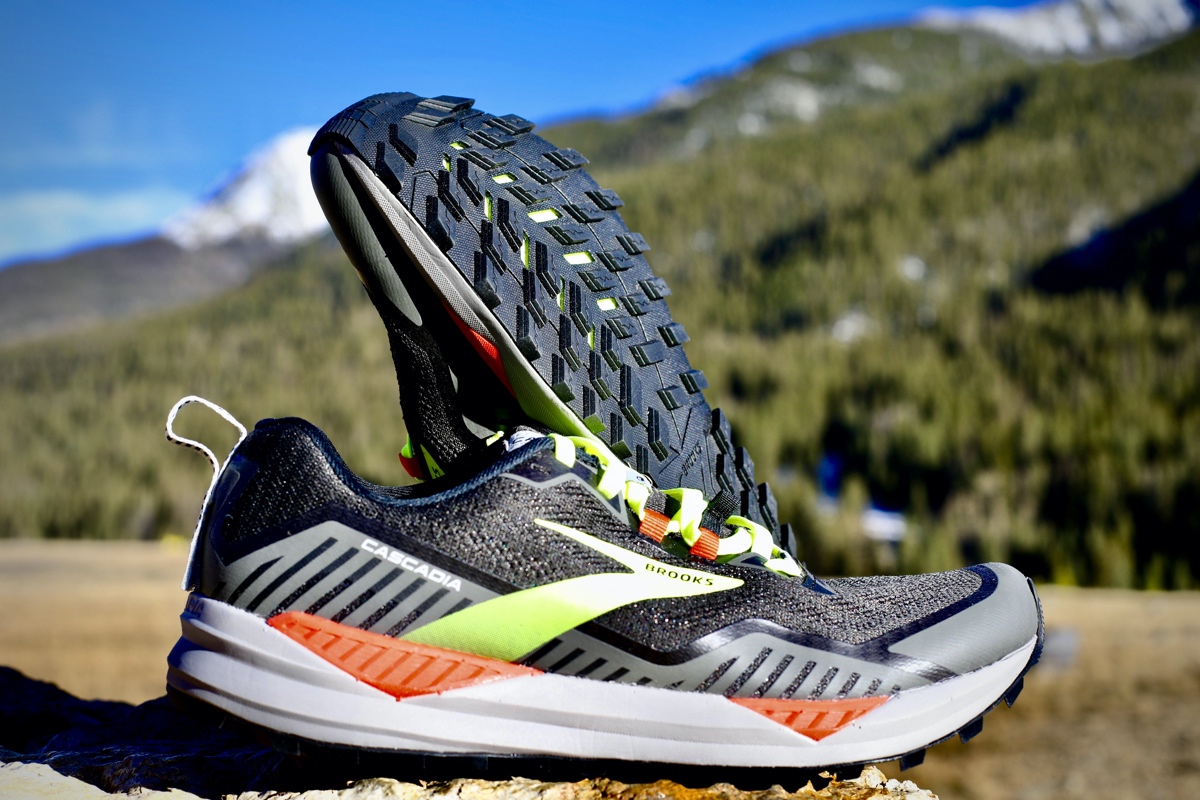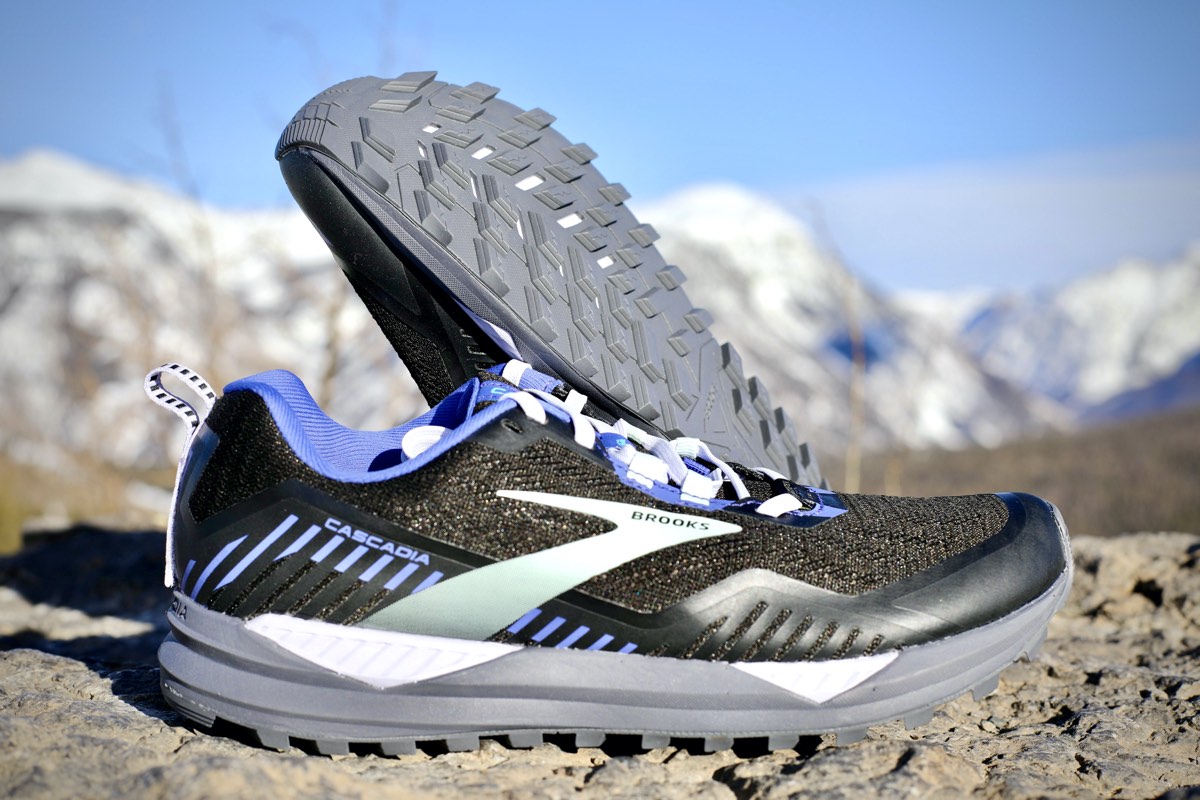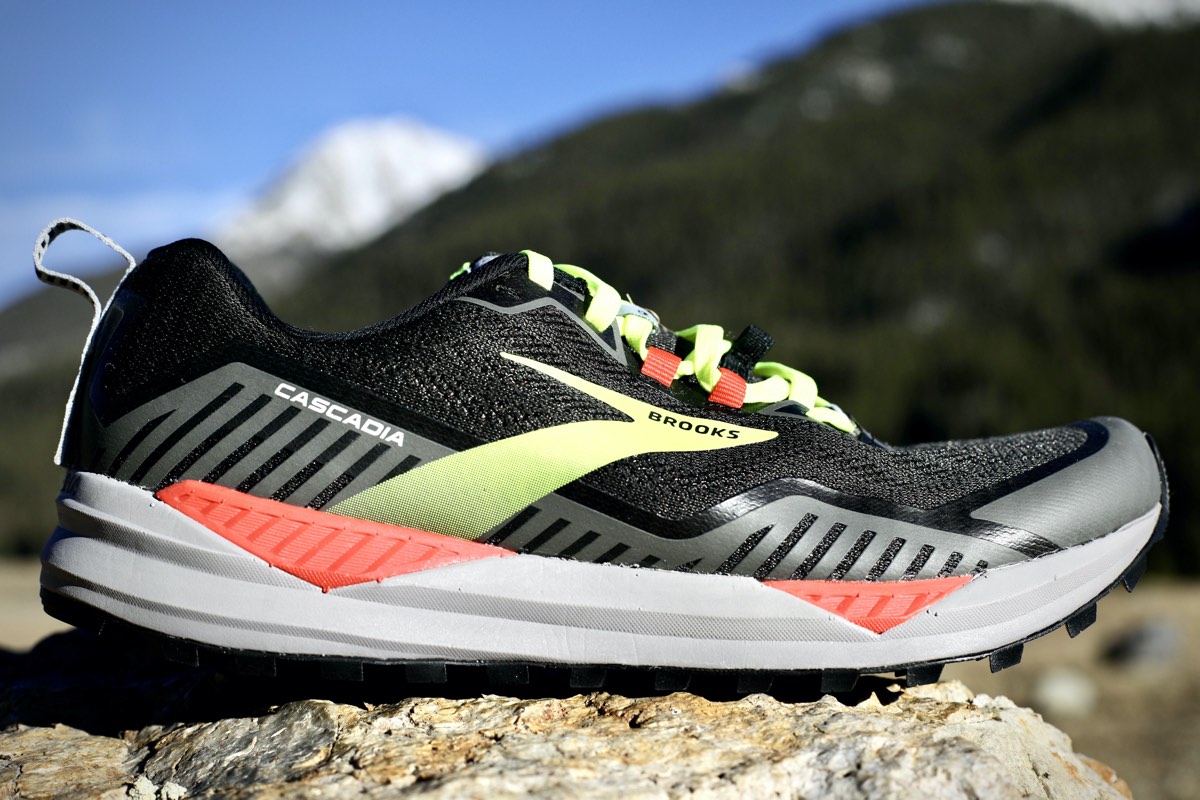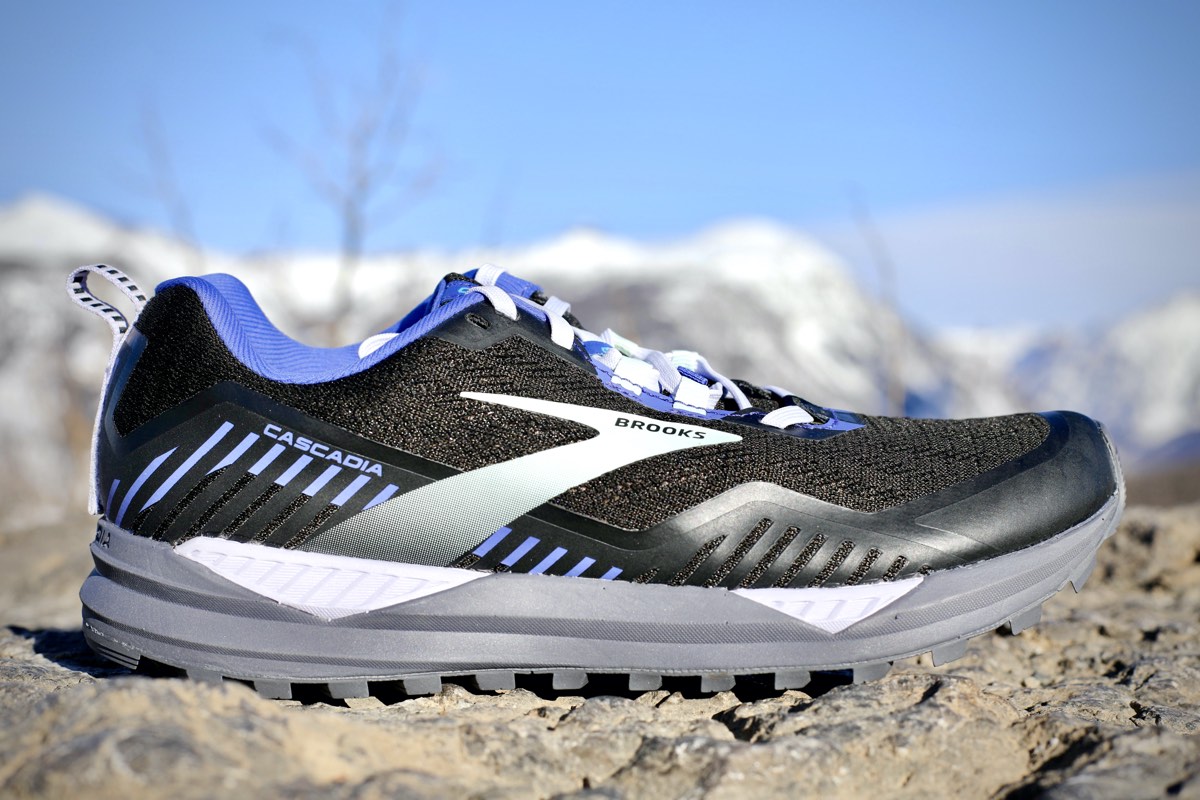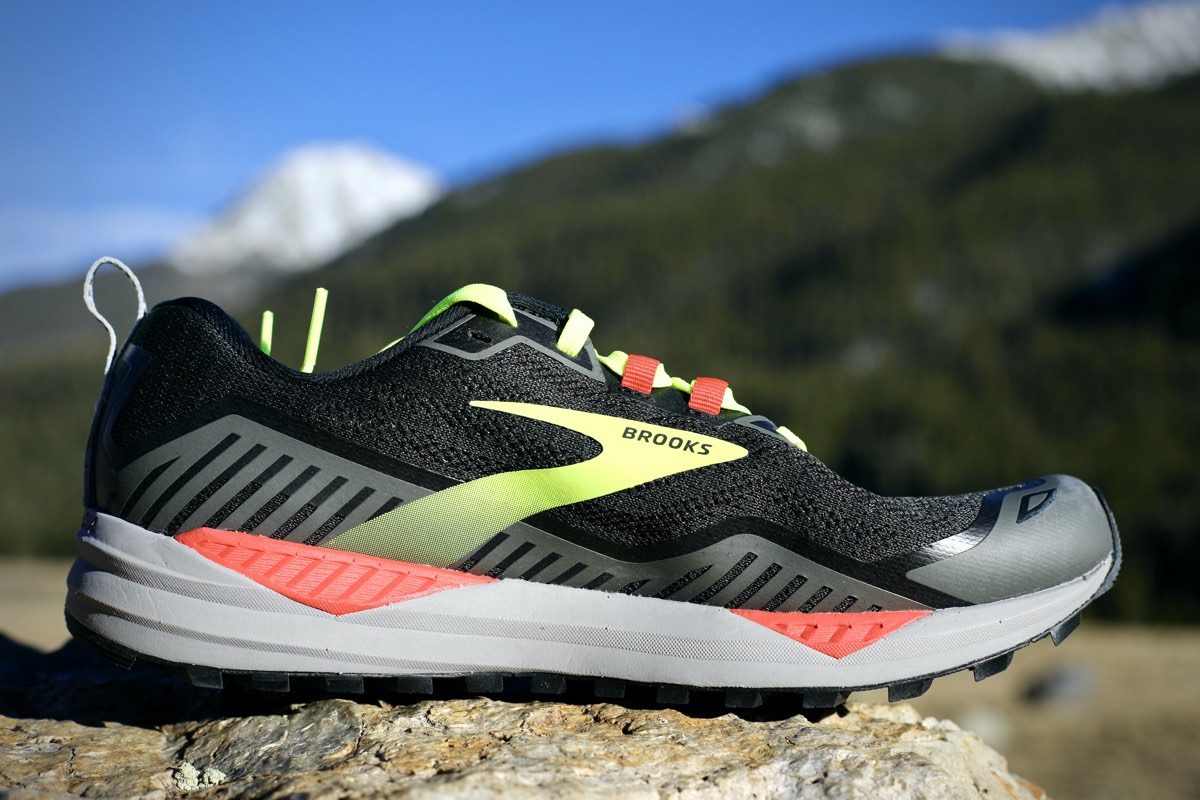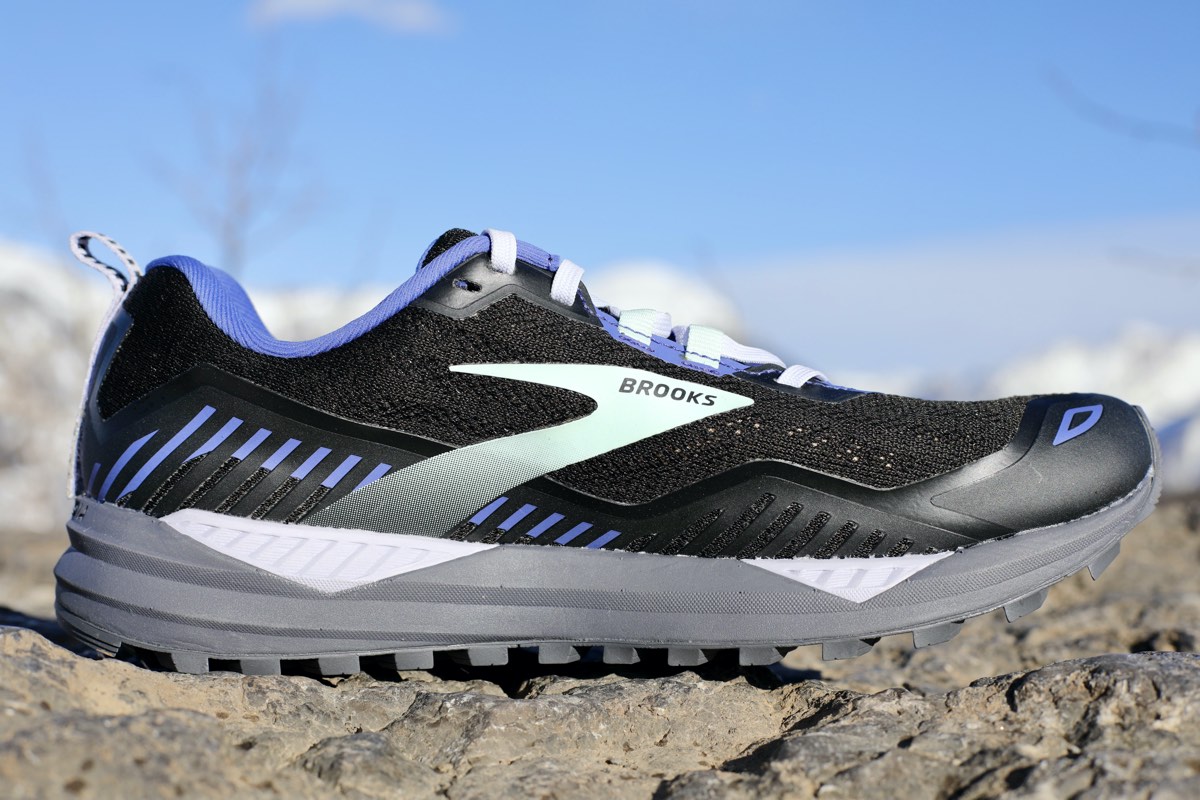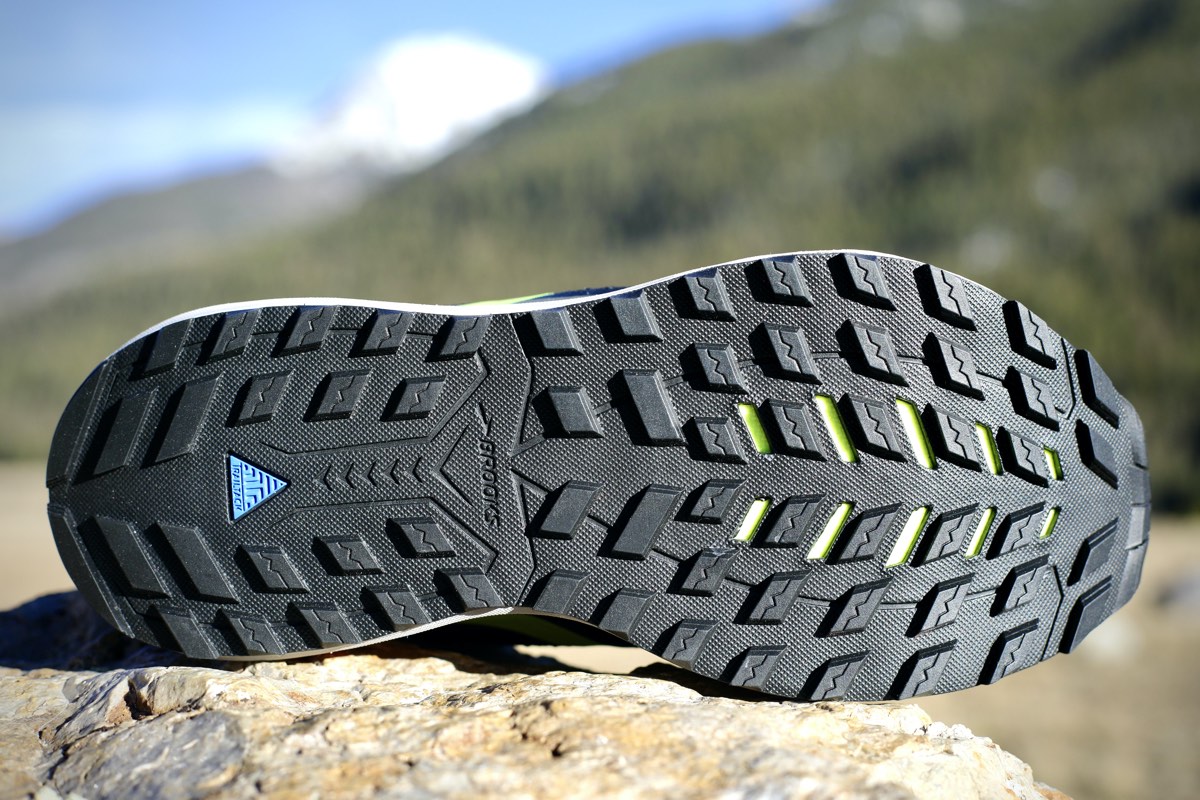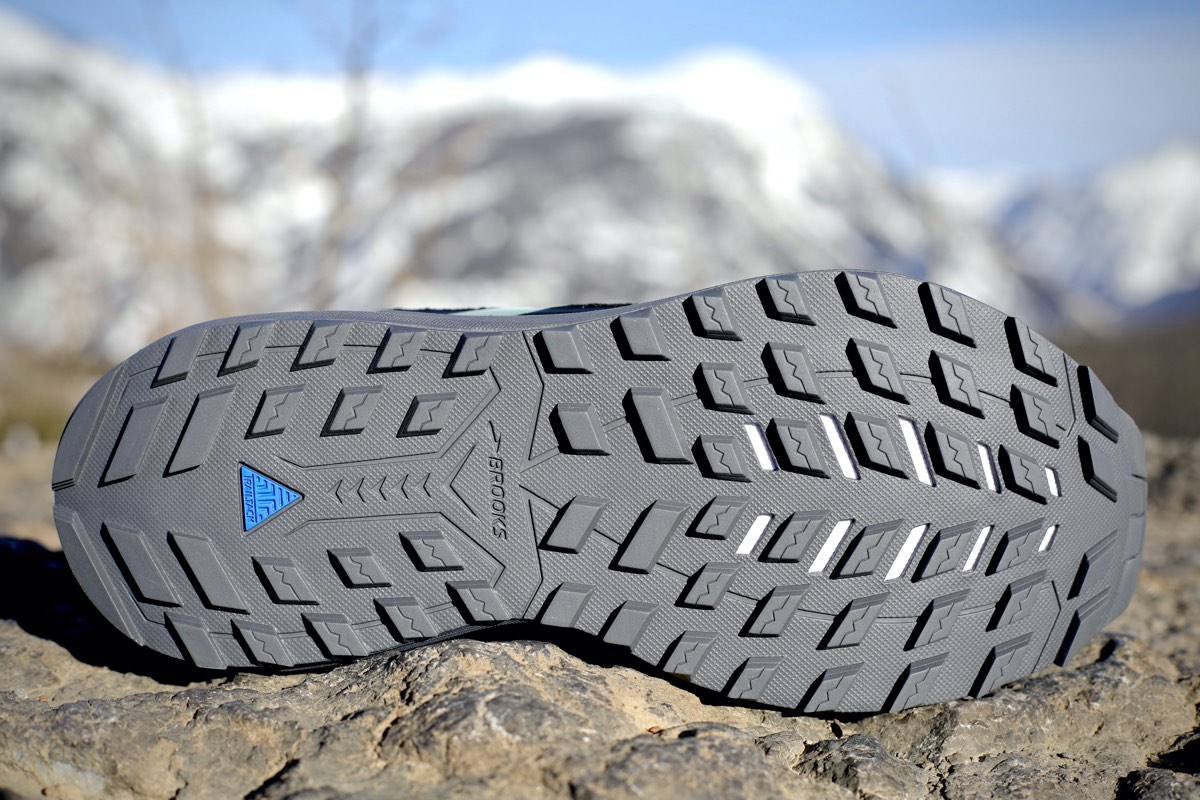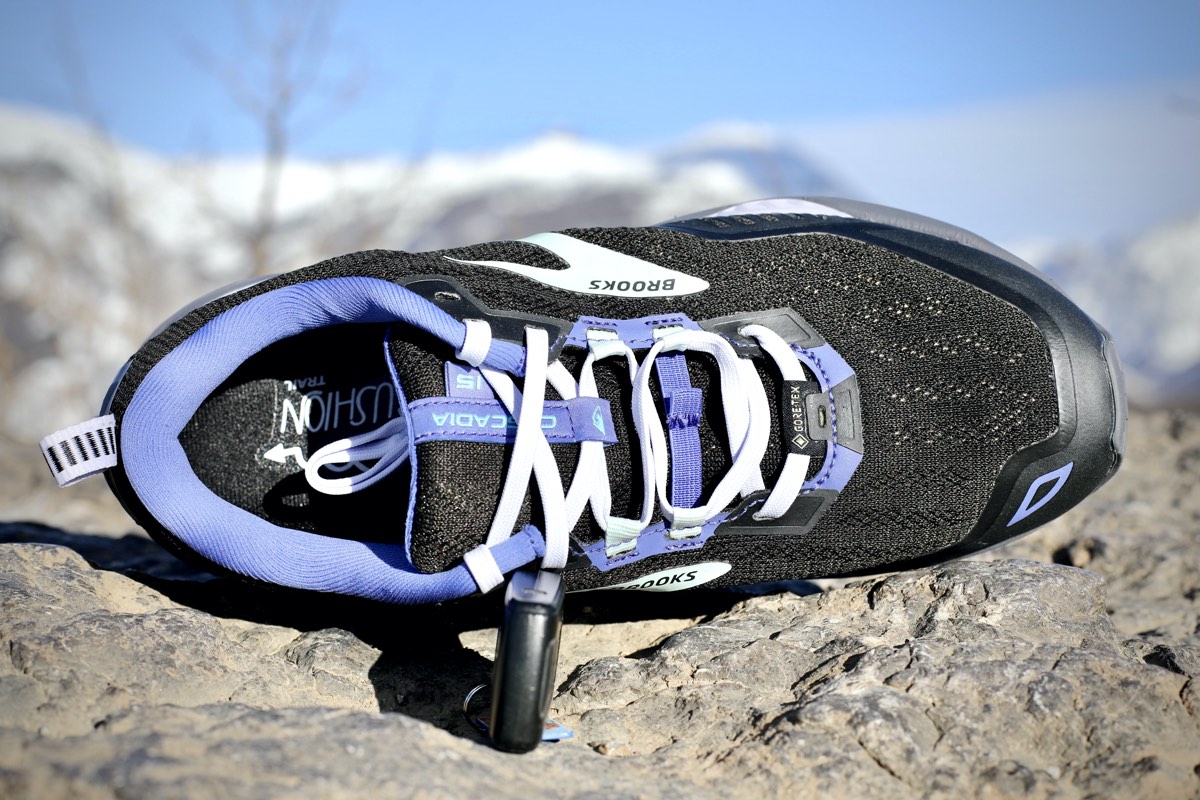Check out the most recent Cascadia in our Brooks Cascadia 19 review.
More Trail Running Shoe Options
To find more options for trail running shoes, check out our Best Trail Running Shoes article.
Brooks Cascadia 15 Standard and GORE-TEX Reviews
Brooks Running promises “total comfort” in their Brooks Cascadia 15 ($130) and Brooks Cascadia 15 GTX ($160) trail running shoes as a result of heel-to-toe protection, trusted stability, and improved fit. I have had the pleasure of testing both models this past winter and can vouch for what Brooks aims to achieve with the Cascadia 15.
The nuts and bolts of the standard Cascadia 15 and its waterproof version, the Cascadia 15 GTX, are essentially identical. Both feature an 8mm drop, a built-in rock plate called the Ballistic Rock Shield, Brooks’s Pivot Post System for stability, and their environmentally friendly BioMoGo DNA foam for long-lasting cushioning. The Cascadia 15 GTX model additionally contains GORE-TEX Invisible Fit technology bonded directly to the upper for breathable waterproofing. The standard men’s model weighs 11 ounces (312 grams) while the waterproof model weighs 11.7 ounces (332 grams).
We’ve also named the Brooks Cascadia 15 one of the best trail running shoes! See our Best New Trail Shoes of Fall-Winter 2020 for more recent trail running shoe releases.
Let’s look at more details of these trail running shoes.
Brooks Cascadia 15 and Brooks Cascadia 15 GTX Upper
Most of the updates made in the Brooks Cascadia 15 and Brooks Cascadia 15 GTX from previous versions have occurred in the upper. The monoloop engineered mesh keeps my narrow midfoot snug while maintaining enough wiggle room in the toebox to comfortably accommodate my ever-prominent bunions. I have found that both models fit true to size. Thermoplastic polyurethane overlays circumnavigate the mesh and not only protect your toes from kicked-up debris, but also the integrity of the upper. Brooks’s 3D Fit Print upper technology aims to increase breathability, improve drainage, and speed up drying time.
The GORE-TEX model bonds its Invisible Fit waterproof-yet-breathable membrane directly to the upper for a light and flexible fit. Having ran far too many miles in the dead of Minnesota winter during a previous phase of life, I have a pretty profound respect for the art of perfecting the combination of breathability and weatherproofing. In my current, temperate, Southern Oregon environment where it’s always above 20 degrees Fahrenheit (-6 Celsius), I have no complaints regarding these qualities in the Cascadia 15 GTX after a handful of higher altitude, longer, snowier runs. My feet haven’t been dry following every run, but they have never been cold.
Unlike some trail-specific shoes, the Cascadia 15 doesn’t come with a built-in gaiter; however, they do have front and back attachment points to secure gaiters to if you wish to use them. The shoes lace up easily over a gusseted tongue, but the laces have a remarkable tendency for coming untied even when double knotted. That said, there is a lace keeper that, when used, mitigates this problem. Beyond being both functional and comfortable, the upper wears dirt well; the practicality of dark fabric when it comes to trail shoes outweighs flashy color combinations in my closet.
Brooks Cascadia 15 and Brooks Cascadia 15 GTX Midsole
Accustomed to road shoes with significant drop, the Brooks Cascadia 15 and Brooks Cascadia 15 GTX haven’t caused any upset with a stack height of 16mm in the forefoot and 24mm at the heel. Brook’s Pivot Post System provides a stable platform via four pivot points. These pivot points are located on the lateral and medial aspects of the shoe, allowing the foot to adapt to various terrain. Historically, I’ve been prone to overpronation and tend to gravitate toward more of a stability shoe. While the Cascadia 15 categorizes itself as a neutral shoe, the Pivot Post System accommodates a more stable stride while also reinforcing the structure of the platform, improving durability. I have not found myself routinely toppling off these shoes as has been the case with some other brands.
The midsole also contains a rock plate that Brooks calls the Ballistic Rock Shield, intended to protect the foot from rocks and roots. My go-to backyard playground really beat up my feet before transitioning to trail shoes with rock plates. I have had no issues to report this winter, having run all my trail miles in these shoes.
The BioMoGo DNA foam is composed of recycled material and designed to provide long-lasting cushioning that adapts to the foot, offering personalized comfort. As has been my experience with Brooks in the past, I found these shoes to be comfy right out of the box, requiring no break-in time. A couple hundred miles into each pair, I have also not experienced any notable breakdown in either.
Brooks Cascadia 15 and Brooks Cascadia 15 GTX Outsole
The TrailTack outsole has low profile, multidirectional lugs that are smooth on the road and perform well on trail. Currently between pairs of road shoes, I have grabbed the Brooks Cascadia 15 or the Brooks Cascadia 15 GTX for all-road runs and have not been bothered. On the trail, I have found them to have sufficient traction on wet and dry dirt trails as well as rocky and rutted jeep roads. However, it may be worth referencing recent reviews on traction devices or to use a shoe with a more aggressive outsole if you plan to run for very long in the snow. My area is notorious for wet, slippery snow which requires a bit more traction than the Cascadia 15 offers if you want to run through it and stay upright!
Brooks Cascadia 15 and Brooks Cascadia 15 GTX Overall Impressions
The Brooks Cascadia 15 and Brooks Cascadia 15 GTX will no doubt continue to be a crowd pleaser. These shoes are reliably fit for most terrain and have a price point that most are willing to pay for. “Total comfort” is hard not to love, paired with good looks and the admirable combination of waterproofing yet breathability in the GORE-TEX model. My testing pales in comparison to the 46-plus days Scott Jurek spent in 2015 running 50-mile, back-to-back days in Cascadias while setting what was at the time the men’s supported 2,189-mile Appalachian Trail fastest known time; so if you hesitate taking my word for it, consider Scott’s!
Other Versions of the Brooks Cascadia 15 and Brooks Cascadia 15 GTX
While we reviewed the men’s Brooks Cascadia 15 and Brooks Cascadia 15 GTX in this article, be sure to also check out the Brooks Cascadia 15 women’s version and Brooks Cascadia 15 GTX women’s version.
Call for Comments
- Are you running in either the Brooks Cascadia 15 or the Brooks Cascadia 15 GTX? Leave a comment to share your thoughts on either or both shoe models.
- If you are a longtime Cascadia wearer, what do you think of version 15 compared to previous versions?
[Editor’s Note: If you’re affiliated (i.e., an employee, ambassador, etc.) with a brand, please share your relation in each of your comments on this article. Thanks!]
